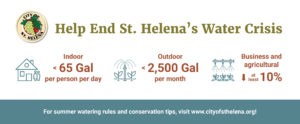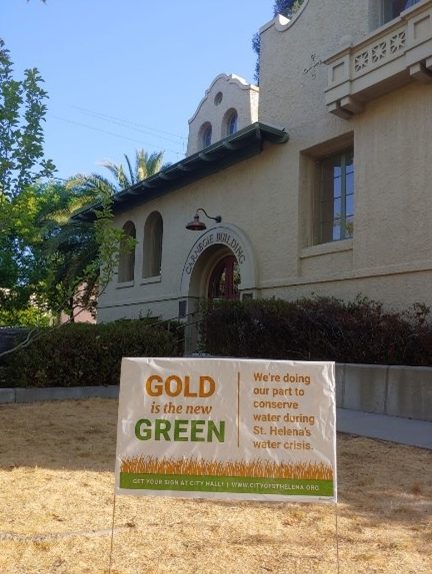2022 is shaping up to be among the driest years on record in the United States. The U.S. Drought Monitor shows very few places are escaping the effects of climate change.
In California, the first quarter of the year was the driest in a century. All of the state’s 58 counties are under a drought emergency proclamation, and residents are being asked to reduce water use by 15% compared to 2020 usage. All signs point to more difficult reductions in the future.
Next door, Nevada’s Lake Mead, which supplies drinking water for about 25 million people, along with hydroelectric power for approximately 1.3 million people, has dropped to historic lows; just 150 feet above “dead pool,” a level that marks the point that water can no longer flow downstream from the dam’s outflow facilities, let alone spin the hydroelectric turbines.
While the situation is dire, the good news is word is getting out, with 2022 research funded by the Value of Water Campaign showing that 54% of respondents think that addressing drought is either very important or extremely important.
Water utilities play a significant role in raising customer awareness of the need to use water wisely, especially given human nature to grow tired, experience conservation fatigue, and return to old usage habits. Some use tiered water rate structures or water budget-based billing to send economic signals through water bills. Increasingly, utilities are communicating proactively with customers; engaging them through a variety of channels to encourage behavior change.
With the last decade of my career spent working for water utilities – either directly or as a communications consultant – I have been a part of many water conservation efforts. Some tips and tricks that apply nationwide include:
Clearly communicate the “why” – Last year, St. Helena, a city in California wine country faced a water crisis. Lack of rain and high temperatures, paired with use of its sole reservoir to fight a major wildfire the year before required declaration of a phase two drought. Communicating the “why” behind the need for water conservation set a firm foundation for subsequent components of the outreach campaign.
Share facts about common activities and corresponding water usage – Most consumers are not aware of the volume of water required for common household activities like brushing your teeth or flushing the toilet. For example, many might be surprised to learn that a five-minute shower uses upwards of 25 gallons, brushing teeth and washing hands uses between two and four gallons each time, and more than 20% of a household’s indoor water use is often by the laundry machine. Sharing these facts can focus customer attention on their water usage.
Set water use target – For years, water customers could monitor their usage only periodically via their monthly or every-other-month water bill, so knowing that each American uses an average of 82 gallons of water a day at home meant little. The trend towards installing Advanced Metering Infrastructure, however, provides a means for real-time monitoring. Setting a daily usage target gives water customers a goal to pursue.

Provide examples of how to reduce water usage – All prior points build to this one, where successful water utilities provide customers with ways they can meaningfully reduce water use. A web search for “water conservation tips” returns many positive results including from the State of California, information from the Save Our Water Campaign, and tips from the U.S. EPA.
Provide means to send social signals – Psychologists understand that individual happiness is directly correlated to, among other things, the degree to which we feel our actions have purpose and a positive impact. We want to be part of a team pursuing a common goal, and we also like others to see that we are doing our part. There are many ways to leverage this social science truth – whether signing a public pledge to be more water wise, adding a water conservation badge icon to our social media home pages, displaying yard signs; there are many ways water providers can encourage customers to signal that they are part of the solution.

Water conservation messages should not be… dry – There are many reasons why utilities traditionally have been conservative and risk-averse in their practices, with good reason – undue risks can negatively impact water reliability and public health. When it comes to conservation messaging, however, these messages are competing with a whirlwind of other consumer-directed messages in the marketplace of ideas. To get attention, messages must be attention-grabbing. A few of the cleverer campaigns folks on our team have been involved in include:
Grass is Dumb – Denver Water via Sukle Advertising
Use Only What You Need – Denver Water via Sukle Advertising
Gold is the New Green – City of St. Helena, inspired by City of Sacramento’s earlier campaign
Ultimately, shrinking water supplies and rising populations spell water trouble for most in the country’s western states. Effective strategic communication efforts can help utilities make progress reducing demand, which can deliver the same result as increasing supply. While it can be difficult to conserve our way to water security, we must count every drop if we are to make every drop count.